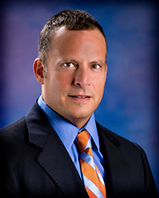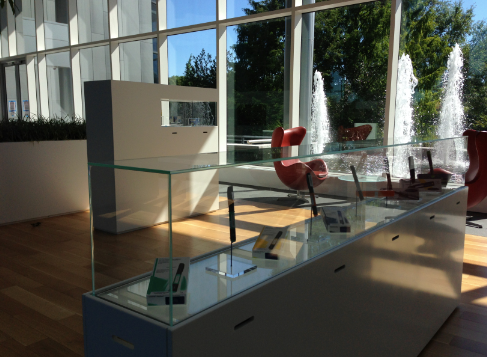How to Win in the Diabetes Space
Novo Nordisk’s SVP of national diabetes sales speaks with PharmExec about a new field force technology initiative, implications of the Sunshine Act, and why Victoza sales won’t slow down anytime soon.
Novo Nordisk’s SVP of national diabetes sales speaks with PharmExec about a new field force technology initiative, implications of the Sunshine Act, and why Victoza sales won’t slow down anytime soon.
At a time when meaningful growth at most big pharma companies is happening in emerging markets – and nowhere else – Novo’s 2Q earnings boasted an 11% growth in overall sales for the first six months of 2013. Of that growth, 70% occurred in the US, despite a cascade of new competing products in the diabetes category.

Andrew Ajello, SVP, national diabetes sales, Novo Nordisk
From his wall-to-wall glassed office in Novo Nordisk’s brand new US headquarters in Plainsboro, New Jersey, Andy Ajello is responsible for overseeing the company’s US diabetes sales organization, including managed markets. He likes what he sees. “We really don’t have anything going off patent right now,” says Ajello. As a result, Novo has continuously expanded its sales forces to reach a targeted 130,000 primary care physicians (PCPs), and 5,000 endocrinologists and institutional physicians.
Still, Ajello says the company’s share of voice remains in the “single teens” with PCPs, and in single digits with the specialty audience. That’s because companies like BMS, AstraZeneca, Lilly and Sanofi are shifting reps over to diabetes drugs after patent expiries in other areas, says Ajello. So how did Novo grow Victoza’s already blockbuster sales by 32% in the first two quarters?
Focus on patient management: Ajello says his reps go in to a practice armed with data like the average national A1c blood glucose levels. “We say, ‘How does that figure compare with the patients in your practice? How can we help you get your patients’ glucose levels under control?’ Healthy living options, patient education materials, bundling things in different languages…that sounds standard, but most companies lead with the brand, and save the educational messages for the leave-behind.”
Dress for success: Novo reps look different, too, says Ajello, who created a Novo “Look Book” that advises reps on how to dress for different calls. Reps should look “professional but not formal,” “neat but not slick,” and “conservative but not stuffy,” according to the book. Ajello says reps that stand out too much in the waiting room make the wrong impression with patients. “The perception [among patients] becomes, ‘you’re the reason my healthcare is so expensive,’” says Ajello.
Strike the right incentive balance: “Reps hate what GSK did,” says Ajello. “We hired all their good people.” Ajello says reps find it unjust to be judged predominantly on quality surveys with physicians. “At the end of the year, [GSK] calls the physician and says, ‘Do you remember these four reps? How good were they on a scale of 1 to 10?’ And that’s how they get their income,” says Ajello. “We offer a strong 75% base salary, great benefits and awesome cars. The bonus is not there to get people to [push the boundaries of compliance], but we’re still selling something. If you do it right, you’ll get a nice compensation based on the volume you generate. We feel really good about a 75/25 salary to bonus split.”
Avoid tech for tech’s sake: “I like to be an outlier in technology,” says Ajello. “I just don’t know if $30 or $40 million on iPads for everyone really gets you back what you put in.” Ajello says Novo was the first to give iPhones to the entire sales team – a $2 million investment and morale booster – but he’s not totally sold yet on the iPad. A group of 100 managed care reps have them, and Ajello says for compliance issues, sampling, and future closed-loop systems, the iPad is undoubtedly a good tool. But the real value of an iPad will come when it’s tied to a platform allowing reps all over the world to aggregate their data and compare notes through global headquarters. From the perspective of an individual detail, “I would love to see an [iPad] sales aid that, when a physician wants to see the footnote, the study pops up, and then there’s another footnote and you see a picture of the KOL who wrote the study, and he’s doing a video on his opinion about what he wrote – that would get attention. We don’t have that yet,” says Ajello. “I don’t mind waiting.” However, Novo has experimented with camera-enabled cars, which render reps accessible in person to tech-savvy physicians who prefer to interface in that way. The initial program began small, with 20 reps, but the average engagement with physicians lasted 13 minutes, says Ajello. The program was expanded to include 300 reps last January. Ajello says he’ll continue to monitor the program, and consider making the case for a larger roll-out at the company’s 2015 strategy meeting.

Products showcased in the lobby at Novo's new US headquarters
Take advantage of unique product attributes: “We don’t put pills on the shelves, we put insulin in the refrigerator,” says Ajello. “The insulin is in a device, so there’s always someone that needs to be educated on how to inject it, how to assemble it, what needle size to use…a lot of ‘hows,’” says Ajello. Bristol-Myers Squibb and AstraZeneca’s Bydureon has the benefit of once-a-week administration, but the needle is “a harpoon, because you have a lot of medication that has to go through it,” notes Ajello. “Our needles are so fine, that we need to educate on that alone, just the needle size.”
Ajello says its too soon to really tell how much the Sunshine Act will affect access to physicians, or how they’ll respond. So far, some doctors don’t seem to care, and others don’t want food or anything else anymore, but “people are likely to forget about the Sunshine Act,” says Ajello. That is, until the dispute/resolution period in 2014, when doctors have a chance to see their respective price tags, and dispute them, before they get published. “If I was a physician, I would say I don’t agree with any of these [value transfers], and here’s my attorney. I didn’t do that, and I don’t want my name on it,” says Ajello. As for the issue of reprints, Ajello says Novo gives physicians two options: first, a doctor can get a letter with all the citations – which doesn’t have a value – and then collect the actual articles himself, or second, the doctor can receive the citations and the reprints, with an explanation that the reprint costs will be variable, depending on the number of citations and publications involved.
In diabetes, there’s still a big fear of needles. Ajello says only 30,000 physicians have written for Victoza, meaning there’s a sizable opportunity remaining. With more Type 2 patients moving into insulin therapy – as evidenced by Sanofi’s $5 billion plus in sales for Lantus – Ajello is optimistic that physicians and patients will come around to self-injection. But in case they don’t, there’s an oral form of Victoza in clinical development, and behind that, oral insulin.
Beyond the Prescription: Pharma's Role in Digital Health Conversations
April 1st 2025Join us for an insightful conversation with Jennifer Harakal, Head of Regulatory Affairs at Canopy Life Sciences, as we unpack the evolving intersection of social media and healthcare decisions. Discover how pharmaceutical companies can navigate regulatory challenges while meaningfully engaging with consumers in digital spaces. Jennifer shares expert strategies for responsible marketing, working with influencers, and creating educational content that bridges the gap between patients and healthcare providers. A must-listen for pharma marketers looking to build trust and compliance in today's social media landscape.
Talphera Cuts NEPHRO CRRT Study Size, Secures $14.8 Million Private Placement
April 1st 2025The trial size adjustment, along with protocol modifications and the addition of higher-enrollment sites, is expected to facilitate completion of the NEPHRO CRRT study of Niyad in patients undergoing renal replacement therapy by the end of 2025.